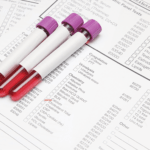
How Home Health Care can Improve the Lab Results for Dialysis Patients
If you are on dialysis, or know someone who is, you know how…READ MORE
DirectMed Health Services (DMHS) was conceptualized on the premise that every person has the right to the highest quality of life possible.
We realize patients and family members will become directly or indirectly involved with illness.
At DMHS, it is our mission to help patients with their recovery while remaining in the comfort and security of their home.
We provide support for the patients, family members, and caregivers through education and appropriate
referrals to support the patients recovery goals.
At DirectMed, you can be assured that you and your family are part of our family of care. We are committed to providing the highest quality health care. While fostering relationships grounded in respect, open communication, and professionalism with our patients, residents, clients and their family members, we provide superior service.
After we verify the patient’s information and receive permission to provide care from a physician, the nurse will call and schedule a time that best fits for the patient and his/her family.
Absolutely. The patient is always allowed to keep their doctor. A visiting doctor can make it easy for the patient since they will come to the home and they can also consult with the patient’s primary doctor (with permission).
That varies based on the plan of care set up with the nurse and the physician. Home health is intended to monitor and educate a patient (or someone else in the home) on how to ensure a healthy and speedy recover. IF IT IS DETERMINED THAT A PATIENT’S HEALTH STATUS WILL LIKELY DECLINE AFTER A SKILLED SERVICE IS REMOVED, LIKE NURSING OR THERAPY, THERE IS NO LIMIT TO THE AMOUNT OF TIME THE PATIENT CAN RECEIVE SERVICES.
DirectMed will only provides services if there is a skilled need such as a nurse or therapists. If there is a skilled needed and the nurse or social worker thinks that the patient has a need for assistance with cleaning and cooking, or similar task, they should contact our office and we will assist in locating resources.
Currently we provide services in the Chicago area, Cook County, DuPage County, Will County, Kane County, Kendall county and Grundy County. If the patient is outside of these counties, we can assist in finding an agency for the patient.
For over 13 years, DMHS has delivered quality care with dedicated staff members and best practices Programs. We also specialize in Chronic Kidney Disease Management. Our specialized care plan is comprised of a professional advisory board, Nephrologist, Renal RN Manager. Renal Dietician, Renal Social Worker and Chronic Kidney Disease patient.